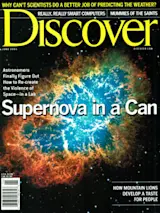Some of the world's oldest and most beloved toys are built on simple physics. A top, for instance, is ruled by gyroscopic stability and precession. Likewise, a yo-yo depends on momentum and acceleration, and building blocks on friction and compression. Now three toy designers have added more physics to these classics, giving them a brand new look.
"You want about a seventh of the weight of the yo-yo to be the weight of the die," says Steve Brown, Freehand yo-yo inventor. Courtesy of Duncan Toys
With multiple axes of spin, Tetratops twirl on any of their outside spheres. And all sizes stack together because three touching spheres form a stable triangle.
Steve Brown: Yo-Yo MasterTrying to do a release move with a yo-yo, such as going around the leg, is a fancy trick that confounds even experts. The toy's string is so thin and limp that it's hard to recatch. ...














